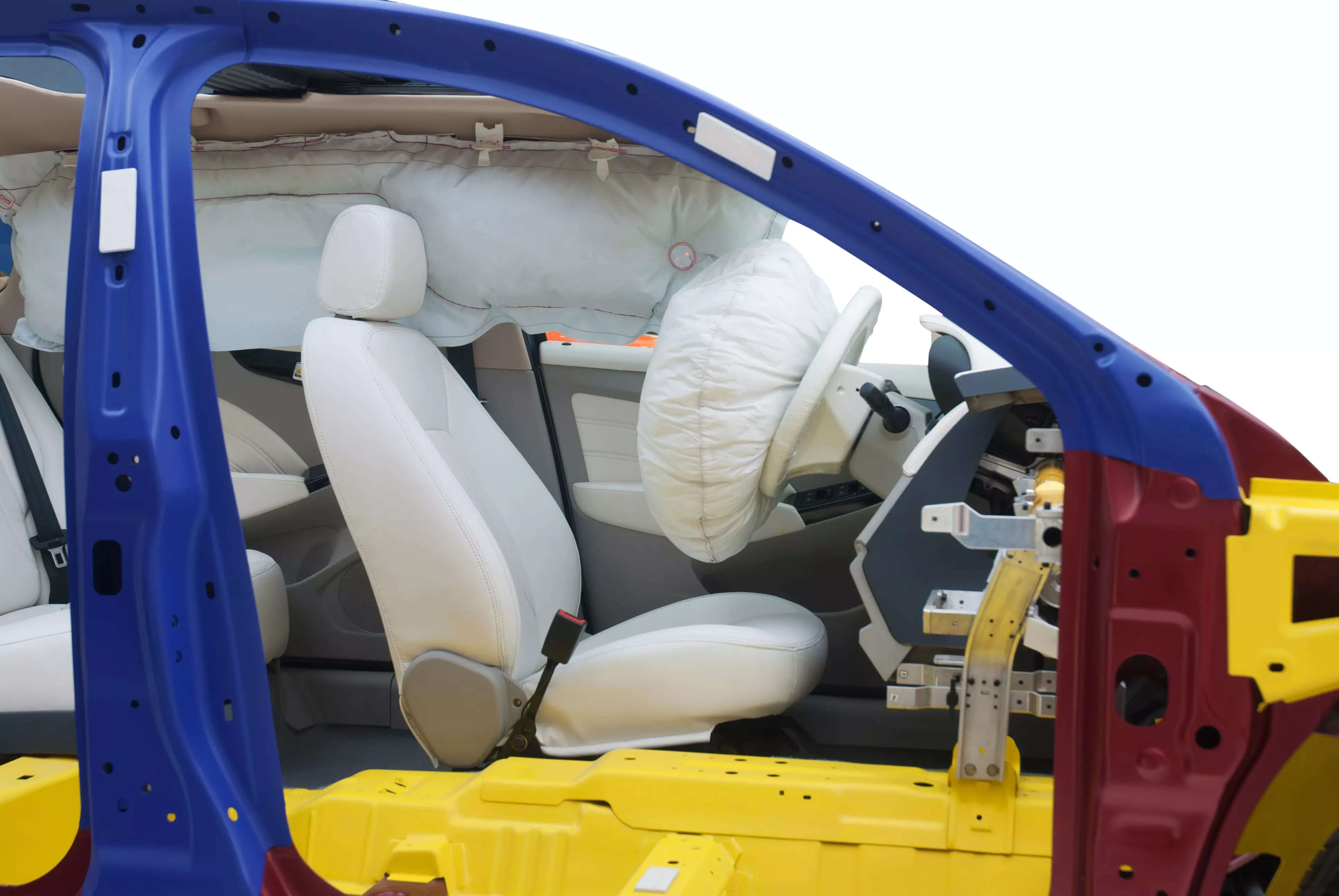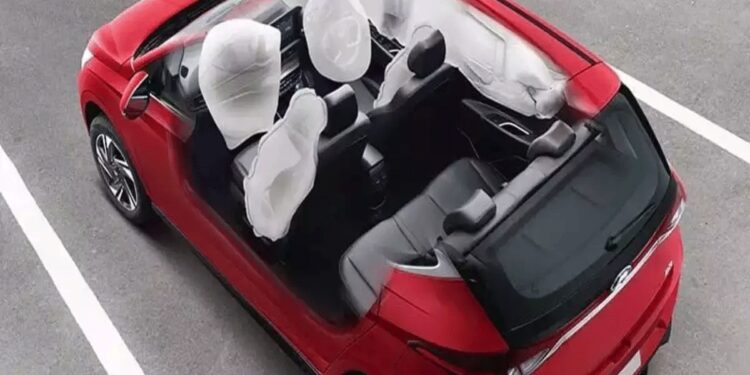
The Centre has called a meeting of automobile industry stakeholders next week to discuss the roadmap for mandatory fitment of six airbags in all vehicles carrying up to eight passengers as part of the broader exercise to make Indian roads safer.
Sections of the industry have argued implementation of the norm will make four-wheeled vehicles expensive, putting them out of reach of entry-level buyers. But a top source in the government told ET that in a market where more than 80% of personal buyers opt for financing solutions, the additional cost would translate into barely Rs 150 on equated monthly instalment plans. Fitment of additional airbags would entail extra costs of Rs 6,000-10,000 on a small car.
Industry estimates the cost of additional airbags will be Rs 12,000-16,000
“Indians today are looking for comfortable, aspirational vehicles with the latest technology and safety features. Consumers are opting for SUVs. At the entry-level, they prefer larger pre-owned vehicles over new models with basic features. Will a buyer today not agree to pay Rs 150 per month for safety?” said the senior government official, adding that New Delhi is working with the industry to find a mutually agreeable solution.
India ranks at the top globally in road accident-related fatalities and third in injuries, despite accounting for just 1% of the world’s vehicle population. As many as 500,000 road accidents occur in the country annually, resulting in 150,000 deaths. Nearly 70% of those who die in road accidents are aged 18-45 years.
The official added that on regulations regarding mandatory fitment of airbags for enhanced passenger safety, India is 12-15 years behind other major other automobile markets.
“We want to ensure that the vehicles sold in the Indian market do not have diluted safety standards, but are on a par with global norms,” said the official.
As per data by automotive consulting firm Jato Dynamics, the penetration of vehicles with six airbags stands at 98% in the US and 12-13% in India. However, the average vehicle price in India is about Rs 10 lakh — a third of the cost in the US. Ravi Bhatia, president, Jato Dynamics, explained, “There is merit in having six airbags in a vehicle for occupant protection. However, pedestrians and two-wheelers together account for 51% of road accidents in India.”
Efforts are being made to motivate and bring on board all manufacturers before notifying the final norms.
Earlier in January this year, the Ministry of Road, Transport & Highways (MoRTH) issued draft notification mandating vehicles of category M1, manufactured after October 1 2022, be fitted with two side/side torso airbags, one each for the persons occupying front row outboard seating positions, and two side curtain/tube airbags, one each for persons occupying outboard seating positions.
A senior industry official, who did not wish to be named, said automakers will urge the government for a year’s extension to implement the measure on new vehicles and a separate timeline for existing ones.
“There are some vehicles in the market currently which structurally need to be reinforced to fit in curtain airbags. Besides, there are vehicles which are not available with six airbags options, which have to be tested and certified. This will take some time,” said the industry executive.
Sourcing the requisite number of airbags on a short lead time can prove to be a challenge. A second industry executive said, in the event timelines are close, airbags would initially have to be imported. Suppliers can eventually set up adequate manufacturing capacity for fitment of six airbags in all passenger vehicles.
The government is in talks with airbag manufacturers on the matter. “Safety is of utmost importance,” said the official, adding that the government is looking at a whole suite of measures including promoting manufacturing of sturdier vehicles, introduction of advanced traffic monitoring systems and use of artificial intelligence-based technology to minimise human errors.













